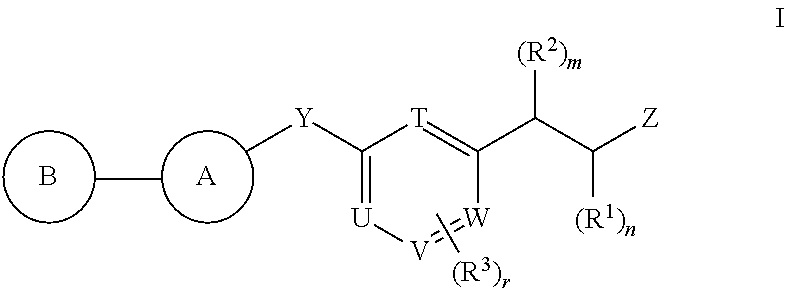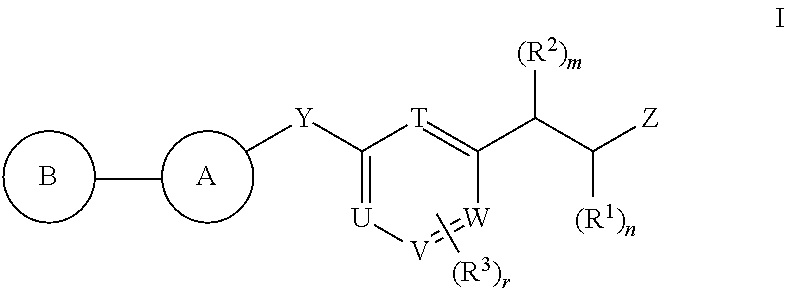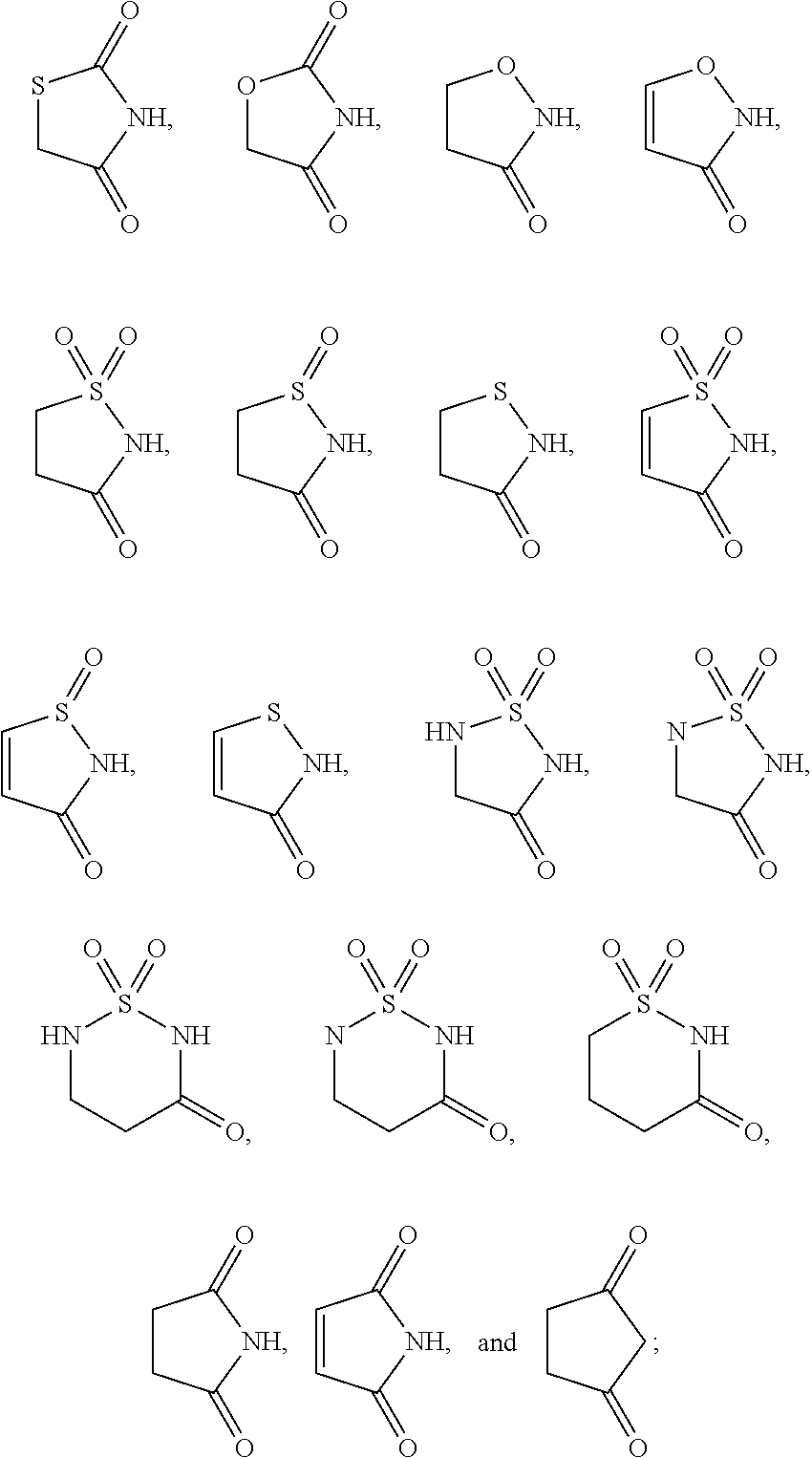Antidiabetic compounds
a technology of antidiabetic compounds and compounds, applied in the field of antidiabetic compounds, can solve the problems of increased and premature morbidity and mortality, inadequate insulin-mediated repression of lipolysis in adipose tissue, and insufficient insulin-mediated activation of uptake, oxidation and storage of glucose in muscle,
- Summary
- Abstract
- Description
- Claims
- Application Information
AI Technical Summary
Benefits of technology
Problems solved by technology
Method used
Image
Examples
example 1
[0954]
(2S,3R)-3-(3-(((S)-1-(2,5-bis(trifluoromethyl)benzyl)piperidin-3-yl)oxy)phenyl)-3-cyclopropyl-2-methylpropanoic acid
[0955]Step A: To a solution of Intermediate 2 (59 mg, 0.252 mmol) in DMF (2 mL) at rt was added Cs2CO3 (164 mg, 0.504 mmol), and the reaction was stirred at rt for 10 minutes. Intermediate 16 (102 mg, 0.25 mmol) was added and the reaction mixture was stirred at 50° C. for 48 h. Then the solution was diluted with H2O, extracted with EtOAc (3×15 mL), washed with brine solution, dried over MgSO4, filtered, concentrated and purified by MPLC (ISCO 24 g, 0-15% EtOAc / hexanes) to give (2S,3R)-methyl 3-(3-(((R)-1-(2,5-bis(trifluoromethyl)benzyl) piperidin-3-yl)oxy)phenyl)-3-cyclopropyl-2-methylpropanoate as a colorless oil.
[0956]Step B: To (2S,3R)-methyl 3-(3-(((R)-1-(2,5-bis(trifluoromethyl)benzyl)piperidin-3-yl)oxy)phenyl)-3-cyclopropyl-2-methylpropanoate (98 mg, 0.180 mmol) in THF (1.5 mL) / MeOH (1.5 mL) / Water (1 mL) at rt was added LiOH (30 mg, 0.7 mmol). The resulting...
example 2
[0957]
(3S)-3-(3-(2-(1-(2,5-Bis(trifluoromethyl)benzyl)pyrrolidin-3-yl)ethoxy)phenyl)-3-cyclopropylpropanoic acid
[0958]Step A: To Intermediate 20 (60 mg, 0.1 mmol) in DMF (1 mL) at rt was added 2,5-bis(trifluoromethyl)benzyl bromide (38 mg, 0.1 mmol) and K2CO3 (68 mg, 0.5 mmol). The resulting mixture was stirred at rt for 12 h, then diluted with H2O (15 mL), and extracted with EtOAc (3×15 mL). The combined organic layers were washed with brine, dried over MgSO4, filtered, concentrated and purified by MPLC (ISCO 24 g, 0-15% EtOAc / hexanes) to give (3S)-methyl 3-(3-(2-(1-(2,5-bis(trifluoromethyl)benzyl)-pyrrolidin-3-yl)ethoxy)phenyl)-3-cyclopropylpropanoate as a colorless oil.
[0959]Step B: To (3S)-methyl 3-(3-(2-(1-(2,5-bis(trifluoromethyl)benzyl)-pyrrolidin-3-yl)ethoxy)phenyl)-3-cyclopropylpropanoate (40 mg, 0.07 mmol) in THF (1.5 mL) / MeOH (1.5 mL) / water (1 mL) at rt was added LiOH (12 mg, 0.3 mmol). The resulting mixture was stirred at 60° C. for 12 h, then diluted with H2O and acidif...
example 3
[0960]
(3S)-3-(3-((1-(2,5-Bis(trifluoromethyl)benzyl)piperidin-2-yl)methoxy)phenyl)-3-cyclopropylpropanoic acid
[0961]The compound of Example 3 was prepared according to the procedure of Example 1 using Intermediate 37. 1H NMR (500 MHz, CD3OD): δ 8.26 (s, 1H); 7.56-7.73 (m, 2H); 7.00 (m, 1H); 6.41-7.6.75 (m, 3H); 4.22-4.37 (m, 1H); 3.62-4.00 (m, 3H); 2.50-2.85 (m, 5H); 1.20-2.20 (m, 8H); 0.88 (m, 1H); 0.46 (br s, 1H); 0.25 (m, 1H); 0.17 (br s, 1H). LC / MS: m / e 530.40 (M+H)+.
PUM
| Property | Measurement | Unit |
|---|---|---|
| Pharmaceutically acceptable | aaaaa | aaaaa |
Abstract
Description
Claims
Application Information
 Login to View More
Login to View More - R&D
- Intellectual Property
- Life Sciences
- Materials
- Tech Scout
- Unparalleled Data Quality
- Higher Quality Content
- 60% Fewer Hallucinations
Browse by: Latest US Patents, China's latest patents, Technical Efficacy Thesaurus, Application Domain, Technology Topic, Popular Technical Reports.
© 2025 PatSnap. All rights reserved.Legal|Privacy policy|Modern Slavery Act Transparency Statement|Sitemap|About US| Contact US: help@patsnap.com



